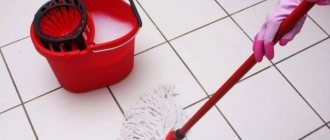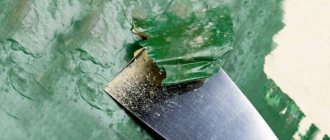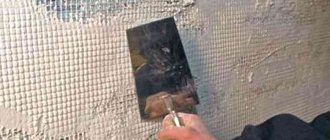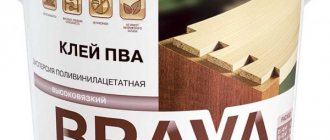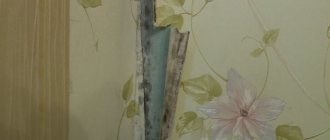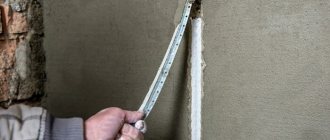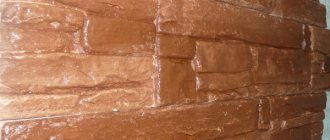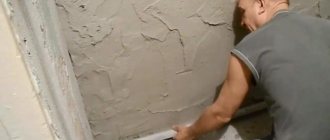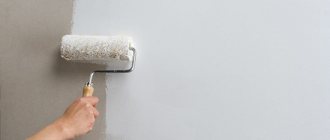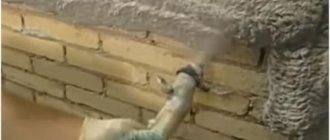4 Other contaminants and precautions
There may be various types of contamination on the tiles depending on the materials and work carried out in the room:
- Cement.
- Sealant.
- Dye.
- Grout.
- Polyurethane foam.
- Putty.
- Tile adhesive.
- Gypsum.
- Primer.
- Plaster.
- Lime.
In any case, this dirt can be easily removed with a wet cloth if it was fresh, that is, immediately after it hits the tile. It will be more difficult to remove frozen old stains; you will have to use special products.
Nowadays, there is a sufficient number of different liquids to remove any type of dirt after repair for tiles. But having some available products at home, you can save money and do without special chemicals. The easiest and fastest way to clean smooth, glossy tiles.
If the tile coating is matte and porous, then the dust can penetrate deeply into the tile and will not be completely removed.
Whitewash and lime are washed off with water. First, soak it well with water, wipe particularly dirty areas with a hard sponge and detergent, and then rinse thoroughly.
Before starting work, you need to put on rubber gloves. When using acids, ammonia, acetone, and other special solvents, the room must be well ventilated.
When using sharp blades, knives and scissors, you should also be careful to avoid injury.
It is better to apply the vinegar solution to the tiles using a spray bottle. If there is serious dirt on the surface, it is better to leave the product for 20-30 minutes so that it breaks down the plaque. The surface with vinegar applied to it can be additionally cleaned with a soft brush of a neutral color.
After the manipulations, all that remains is to rinse the surface with warm water and wipe it with a soft microfiber cloth.
- Liquids for cleaning bathrooms, smearing the stains in several layers;
- Apply table salt to the stain and moisten with water;
- Hydrochloric acid 5%;
- Spray glass cleaning liquid onto stains;
- Apply tooth powder to the stain, wet it and scrub with a stiff brush.
Considering the different nature of the origin of dirt on ceramic tiles, the cleaning methods are completely different. You should know that not every product can be used to clean one type of tile or another; in one case the result may be positive, but trying to clean another type of ceramic tile can irreversibly damage the entire tiled surface.
During the repair process, tiles are constantly at risk of being splashed or smeared with something difficult to clean. It is important to protect the coating from various types of contamination, but, unfortunately, this is not always possible. How to remove paint from ceramic tiles?
The use of sandpaper is considered a radical way to clean ceramic surfaces. This material is used for mechanical treatment of contaminants. After this treatment, it is possible to reduce the contaminants to a more crumbly powdery state. In this case, the surface of the tile will be better cleaned with a damp cloth, as well as with the blade of a paint knife or scraper.
In addition, you can apply a dampened cloth to the stain and leave it for a couple of hours, checking from time to time to bring the dirt to the desired state.
Ideally, stains and splashes from the listed contaminants should be removed immediately after they appear on porcelain tiles. In this case, as a rule, it is enough to use a woven (or non-woven) napkin or sponge soaked in water. The exception is, perhaps, polyurethane foam, polyurethane adhesives and epoxy-based grout - here you cannot do without a solvent.
Construction dust is the simplest type of contamination. Dust occurs even after cosmetic repairs. Such contamination is very easy to remove.
Removing stains from tiles:
- Dampen a cloth with rubbing alcohol and wipe the stain off the tile. Rinse the cloth under running water and wipe the cleaned area of the tile to remove any remaining alcohol.
- Remove stains from tiles using hydrogen peroxide. Rinse the cloth under running water and wipe the cleaned area of the tile to remove any peroxide residue.
- If peroxide is unable to remove the stain, try using it in combination with baking soda. Sprinkle a small amount of baking soda onto the stain. Pour hydrogen peroxide into a spray bottle and spray it onto the baking soda. Wait until the mixture stops sizzling and leave it for 10-15 minutes, then wipe the treated area with a damp cloth.
- Denatured alcohol can also be used to remove stained stains from ceramic tile surfaces. Dampen a cloth with denatured alcohol and wipe the area of the tile to be cleaned. Wait 1-2 minutes, and then wipe the treated tiles from any remaining alcohol with a cloth soaked in clean water.
- Some painted stains can be removed effectively using paint thinner or mineral spirits. Apply a small amount of solvent to the stain, leave for a minute, and then use a cloth soaked in clean water to wipe the treated area of tile clean.
- Although ceramic tile can withstand most chemical cleaners, it is still best to avoid using abrasive cleaners, especially on glazed tiles. Stay away from hard brushes and abrasive powder.
- When removing stained stains from tile surfaces, it is best to use cold water, as heat can make the stain more stubborn and difficult to remove.
The grout joints the individual tiles monolithically, but is difficult to clean
During the process of sealing seams, some of the grout may remain on the front textured side. And since the composition has excellent adhesion properties to the surface, the problem arises of cleaning it from the pattern. I'll tell you how to clean grout from embossed tiles with minimal effort.
How to remove old paint from ceramic tiles
During the finishing work, paint can end up anywhere, and even the protective measures taken are not able to completely protect against its splashes. Often the paint gets on the tiles. If you immediately notice this problem, then cleaning the tiles will not be difficult, but what if the paint has dried and adheres firmly to the surface?
There are many methods for removing paint from various surfaces, and the choice of one or another depends on the type of paint, the degree of contamination and the characteristics of the material with which it is in contact.
In the case of tiles, the last factor plays a particularly important role - tiles with cracks or with a textured surface are especially difficult to get rid of dirt.
But nothing is impossible, and we have prepared for you three methods of removing paint, which can be used both individually and, in particularly difficult cases, in combination.
1 way
If the paint appears on the tiles in patches or spatters, you may want to try scraping it off first. A safety razor or utility knife blade may be suitable for this.
For maximum efficiency, the angle between the tool and the surface should be approximately 45 degrees. The blades must be used carefully so as not to injure yourself or damage the top layer of the tile.
It is better to start in a place that is not too visible - if you see that a layer of glaze is being removed along with the paint or scratches appear on the surface, then you should stop cleaning and try other methods. But, in most cases, it is possible to achieve good results with a blade, and by wiping the tiles with a damp cloth at the end of the work, you can verify the effectiveness of this method.
Method 2
Old, dried paint that cannot be scraped off can be removed using heat. A hair dryer is usually used as a cleaning tool.
Before you start heating, ensure the room is ventilated, as many paints, when exposed to temperature, begin to smell strongly and even emit substances that are dangerous to the human body.
When using this method, it is best to divide the contaminated surface into small areas, 30x30 centimeters in size or slightly larger. You need to heat the paint gradually, continuously moving the nozzle of the hair dryer. To begin with, set the air heating temperature to the middle position and then, if necessary, increase it.
When the paint gets hot enough to become sticky and soft, you need to take a plastic scraper and start removing it.
As with the blade, the tool should be held at a 45-degree angle to the surface of the tile. You need to use a scraper starting from the edges of the tile and moving towards its center.
As you work, you will notice that the paint will begin to harden and in this case you will have to pick up a hairdryer again.
3 way
If the first two cleaning methods do not help, you will have to resort to the most radical, chemical action. Removing paint using various solvents is most effective and works especially well with tiles that have a textured, uneven surface.
This method will also help clean old tiles covered with small defects and cracks. It must be remembered that although such cleaning is the most effective, it can also be considered the most risky.
It would also be a good idea to test the chemical on leftover tiles or in an inconspicuous place, such as a corner or behind furniture. Don’t forget about safety precautions - add rubber gloves to your goggles and respirator to protect your hand skin from burns.
If you doubt the chemical resistance of a glazed surface, start with the least aggressive solvents.
We suggest you read How to clean a suede jacket at home
In some cases, you can get by with regular table vinegar diluted 50 to 50 with water.
For greater effectiveness, you can try soaking the stained surface with liquid and leaving it for a few minutes. To remove softened paint, use the familiar plastic spatula.
Useful tips 09.20.2019 12:51:11
Only registered users can leave reviews. Please register
Ceramic tiles are present in every apartment today. It is used in rooms where there is often high humidity, temperature changes, and splashes of dirt and grease. The tile takes a powerful blow, but even such a resistant material can become covered with plaque, which is not always easy to remove.
Specialists whose main specialty is office cleaning helped us select the most effective ways to clean ceramic tiles.
The company employs real professionals who know well how to clean this or that type of surface, even from the most difficult contaminants, and do it in the shortest possible time so as not to disrupt the work process in the office.
The industry has long developed a lot of special compounds that help wash away plaque, greasy stains, various types of dirt and even traces of mold from tiles. Under the trademarks “Silit”, “Santik”, “Domestos”, “Komet”, “Sif”, “Mr. Muscle” and others, products are produced that in a matter of minutes allow you to return the tiles to their original appearance.
Before purchasing, it is important to read very carefully the instructions for use and the type of tile that can be cleaned with such products.
It is better to take cream or gel-like compositions - products with abrasive particles can leave a lot of small scratches on the tile, in which dirt will accumulate in the future.
It is also worth considering the chemical resistance class of the tile: tiles of class A and AA are the most resistant to various types of aggressive agents and will easily survive almost any impact, which cannot be said about tiles with resistance rating C.
It is advisable to take a product that does not contain chalk. If the seams between the tiles are treated with epoxy grout, then acid-containing products are also prohibited. If a whitish coating appears on the tiles, it is better to use a product containing chlorine. The processing method will be indicated in detail on the packaging - it must be followed carefully.
Light stains can be washed off with regular dishwashing detergent. It is enough to dissolve a small amount of it in warm water until foam forms. The resulting solution is applied with a sponge to the contaminated tiles, left for 10-20 minutes, and then thoroughly washed off with plain water.
Instead of detergent, you can use regular soap (laundry soap is not recommended). To make the dissolution process faster, you can rub the bar soap into warm water. Next, the washing process is similar to that when using dishwashing detergent.
If a special means for washing tiles is not always at hand, then every housewife probably has a composition for washing glass and mirrors in her arsenal.
Almost every such product contains ammonia, which will help remove minor dirt from the tiles and restore it to its former shine.
The cleaning method is no different from washing windows: you need to spray the composition, and then carefully treat the surface with a soft cloth.
Modern detergents are, of course, effective, but they also have disadvantages. Firstly, household chemicals can cause allergies.
Secondly, it requires very careful handling, since sometimes the concentrations of aggressive chemicals in them can damage the skin of the hands and even the respiratory tract. Thirdly, some products cannot be completely washed off even with a large amount of water.
Therefore, it is not surprising that today many people abandon store-bought products and switch to using folk remedies.
The most popular and easiest way to clean ceramic tiles from grease, lime deposits and plaque is to use lemon juice. Problem areas should be thoroughly rubbed with lemon and left for a few minutes.
Lemon juice can be squeezed out, diluted a little with water and sprayed with a spray bottle. After a few minutes, the juice is washed off with water.
The bonus of this method is that the room will be filled with a pleasant and, most importantly, natural aroma.
An alternative is citric acid powder. The bag is dissolved in a glass of warm water and the resulting liquid is used for processing.
No. 5. SODA AND VINEGAR
The reaction of baking soda and vinegar allows you to soften deposits of dirt and plaque. To clean ceramic tiles, you need to apply a paste of soda slightly moistened with water to the problem areas. Then they spray a solution of table vinegar; it is most convenient to do this with a spray bottle. Let the components react for 3-5 minutes, then the slurry must be washed off.
No. 6. SODA
Soda itself can also have a good effect on fatty stains. In general, this substance is considered a universal cleaning agent; it can also be used to remove, for example, coffee and tea stains that have become ingrained in dishes.
The washing method is the simplest: wet a sponge, dip it in soda powder and begin to carefully work the surface of the tile, dipping the sponge in soda powder again and again as necessary. Plaque and dirt should be cleaned thoroughly, but you should not press too hard to avoid scratching the tile.
From dust
During the repair process, a lot of dust is necessarily generated, which settles on vertical and horizontal surfaces. Here's how you can get rid of dust at home:
First, use a brush or rag to remove large particles of dirt and debris from the floor. Use a vacuum cleaner to remove smaller particles and dust settled on the surface. Any remaining adhesive, polyurethane foam or plaster remains removed with a razor blade or a construction knife. Finish the fight against dust with wet cleaning.
To obtain maximum effect, prepare special solutions:
Based on citric acid. You will need: citric acid – 120 g, warm water – 10 l. The acid crystals are completely dissolved in warm water, after which you can begin cleaning.
The rag is generously moistened with the solution, wrung out and wiped first the floor, and then all vertical dusty surfaces. A properly prepared solution will not only remove all dust from the tiles, but also give it additional shine.
Based on acetic acid. You will need: table vinegar 9% – 125 ml, warm water – 7 l, citric acid – 50 g. Vinegar is poured into water and stirred thoroughly, after which citric acid is added to the solution and waited until its crystals are completely dissolved. Wet cleaning is done with a rag, periodically wetting it in the solution. After cleaning is completed, the tile surface is wiped dry to avoid streaks.
With washing powder. You will need: powder for automatic washing - 150 g, warm water - 10 l. The powder is poured into a container with water and stirred thoroughly until completely dissolved. The floor and walls are wiped with a rag soaked in the solution. After completing cleaning, surfaces should be treated with a damp, clean cloth and wiped dry.
How to properly clean tiles after renovation
Ceramic tiles or just tiles in a modern interior are an irreplaceable material, because... practical, easy to clean and beautiful, gives the room a finished, neat look. The only thing that can be very upsetting is the contamination of the tiles after repairs.
Depending on the raw material, the surface may react to the chemical composition of the surface being treated, or may be indifferent to the action of aggressive agents. Clinker tiles are formed by extrusion or wet pressing, and then fired for a long time at high temperatures. Porcelain tiles are produced using the semi-dry pressing method and, just like clinker tiles, porcelain tiles are fired at high temperatures.
We suggest you familiarize yourself with woodlice in the bathroom and how to get rid of it
You can thoroughly clean tiles after repair using either a homemade or purchased solution.
After repairs, unfortunately, the tiles can become dirty, and the dirt can be such that it cannot be washed off with ordinary soapy water. Sometimes a very pressing question arises: how to clean tiles after renovation?
Methods for cleaning tiles:
- The frozen adhesive solution is moistened with water in which vinegar or ammonia is dissolved, then mechanical forces are applied using any auxiliary equipment, for example, a spatula, scraper, screwdriver, etc., or solvent-based chemicals are used.
- The absorbed primer is washed off with special products that contain solvents, acetone, or you can use a fresh primer, then simply clean it off with auxiliary tools.
- If the tiles are contaminated with cement grout, lime or plaster, you can simply wash it off with water, but for epoxy grout you will have to buy a special epoxy solvent.
- Construction dust and putty can first be removed with a dry cloth or vacuum cleaner, and then it is suggested to wash it simply with water or soapy water, water with lemon, vinegar or glass cleaner.
- Silicone sealant or paint can be removed mechanically or using solvents based on acetone or white spirit.
Successful cleaning of tiles consists of correctly identifying the type of contamination, the surface layer of the tile itself and using the appropriate product, but the best way to clean all types of tiles is to protect them before repairs or timely removal of contamination.
How to remove stains from tiles
Stains formed on ceramic tiles should be removed as soon as possible. Depending on their composition, they can discolor the tile or, conversely, leave a foreign color, as well as spoil the appearance of the grout, which easily absorbs foreign materials.
When choosing what to clean the tiles with, the decision should be made in favor of a brush with soft bristles, and also use various appropriate solutions to remove stains. You can use store-bought products, but only for ceramic tiles, since they require special care, and plumbing fluids can, in addition to removing stains, disturb the surface of the tile, discolor or leave streaks.
A universal solution for cleaning tiles is an alcohol solution. It copes well with various stains, as well as with seams between tiles.
Dilute vinegar helps get rid of soap stains and small stains. It is better to spray it over the entire surface, and after a few minutes, wipe it with a soft cloth.
An excellent tool for cleaning stains is a vacuum cleaner with a washing mode, which has a special temperature mode and water supply pressure specifically for tiles, and also uses suitable cleaning products.
Stubborn dirt can be removed using a mixture of liquid soap and sugar in a ratio of 2 to 1. You should always start washing from top to bottom and wipe dry in the opposite direction.
How and with what to wash primer from porcelain tiles
If porcelain tiles are stained with a primer, and unpleasant whitish stains remain, then you can clean it with household chemicals that contain acid.
If stains appear again after drying, then you need to apply a bathroom cleaner, cover with a wet cloth and let it soak for an hour, then thoroughly rub the stain with a stiff brush or washcloth, then rinse with clean water and quickly wipe the stain dry.
You can easily and quickly wash the primer from porcelain stoneware using available detergents.
The ingrained, dried primer is difficult to wipe off from porcelain stoneware; it is recommended that when repairs are carried out, the following precautions are taken:
- Cover porcelain tiles with plastic film or other protective material;
- Wipe off dirt as soon as it appears, do not allow it to soak in and dry out.
- If the tile surface is unpolished or semi-polished, special protection is required.
It is necessary to apply the preparation to the porcelain tiles, rub it over the surface with a hard sponge, and then rinse with clean water. Be careful with your ceramic tiles, and then you won’t have to wash them with all sorts of chemicals.
Cleaning tile elements after repair
As soon as the repairs are completed, it is necessary to put everything in order, especially the tiles that were laid in the rooms, both on the floor and on the walls, need cleaning. Matte tiles are cleaned with products that should not contain organic acids and fats, because they can destroy the top layer of the tile, because its surface is porous. To clean glossy tiles, do not use soda and laundry soap, metal brushes or sponges.
If you need to wash the tiles after repair, then you should first prepare detergents and special gloves so as not to damage the skin of your hands.
After completing the repair, you need to carefully check those places that may be the most contaminated:
- The surface next to the seam;
- Cement stains all over the tile surface;
- Whitish stains from primer.
If machine oils, enamel or resin, traces of rubber, or candle wax get on the tiles, they can be removed with a nitro solvent, acetone or turpentine. Regular animal or vegetable oils can be washed off with caustic soda.
Construction dust is the most harmless type of dirt. It's easy enough to fix. How to clean linoleum from water-based paint? Such dust is present even during cosmetic repairs. Therefore, it is better to remove it as soon as possible so that it does not eat into the tiles.
First you need to vacuum the coating or sweep away the dust with a soft brush or rag. Frozen finishing materials must be carefully removed so as not to damage the glaze with a sharp blade, sharpened with a spatula, or in another way. Then you can begin wet cleaning using the following solutions:
- Soap solution is the simplest and most affordable remedy. Soap can be replaced with washing powder.
- Water with lemon juice. Gives glossy tiles shine and distributes a pleasant citrus aroma throughout the room.
- Vinegar. Also diluted in water. Suitable for cleaning serious stains. It also adds shine to the surface and creates a protective layer on its surface.
- Glass cleaner. There is one in every home. It copes well with dirt and eliminates stains.
From glue
Removing glue from a tile surface is not easy. There are three main ways to remove adhesive residue from tiles:
- Still wet glue can be removed using a damp cloth and a scraper. You need to act carefully so as not to damage the surface of the tile.
- The old glue will have to be softened first. Prepare an aqueous solution with ammonia in a ratio of 1 to 1, then moisten a rag and apply it to the contaminated area. After 15-20 minutes, you can remove the softened glue residue with a spatula. Putty and cement can be cleaned in the same way.
- Another softening method is using acetone. The fabric is also impregnated with it and applied to the dried fragments. Clean the dirt with a spatula after 20 minutes.
If the surface was stained with sealant, gasoline will help. Silicone stains are cut off with a spatula and then cleaned with a cloth soaked in gasoline.
How to remove old paint from ceramic tiles
3 way
Tiles require special care - after all, stains on tiled or porcelain stoneware coatings after repairs do not decorate them at all. So let's start fighting them.
It is clear that each type of pollution requires its own remedy. We suggest moving from simple to complex, i.e. we will analyze the different types of stains on tiles and how to eliminate them.
Removing inscriptions and graffiti from the facades of residential buildings. A joint project of LLC Management Company "Holmservice" Krasnoyarsk and...
It is not difficult to clean tiles from construction dust after renovation. To do this, you will need a soft cloth and warm water. The tiled surface will have to be washed several times, so get ready for this right away. And do it this way: wash the tiles with a rag and plain water, wait until it is completely dry.
What is the price for removing old paint from walls? Repeat the process until you get the desired result. Usually, for absolute cleanliness, changing the water 2-3 times is enough.
When contaminated with construction dust, it doesn’t really matter what material you wash – ceramic tiles on the wall in the bathroom or kitchen, or porcelain tiles on the floor. In any case, water is the best helper.
Important! To speed up the process and get excellent results, use a liquid cleaner that you add to the water. The most famous of this line of household chemicals is Mister Proper.
If dust gets stuck in the seams between the tiles, use a toothbrush. With its help, you can efficiently clean hard-to-reach areas.
Washing the paint
With paint the situation is more complicated. The easiest way to deal with fresh marks: if you accidentally get paint, you should quickly wipe it off with a soft cloth, and that’s it. If you hesitate, it won’t be so easy to wipe off dried paint from tiles or porcelain tiles.
- Stains from water-soluble paint should be thoroughly moistened and then washed off.
- Fresh traces of oil paint can be removed with vegetable oil.
- Old paint stains can be removed from tiles using a solvent.
To clean floor tiles from stains, first try removing them mechanically - with a blade, felt or sandpaper, and then wash them with plain water with the addition of dish gel.
If, after laying the tiles, there are still strips of silicone adhesive on it, carefully cut off the remains with a sharp blade or knife. Small remaining traces are easily dissolved with the help of white spirit, gasoline or kerosene.
Important! When working with flammable liquids, be careful! Wear a mask and gloves when working, do not smoke under any circumstances, and do not light the gas stove!
We suggest you familiarize yourself with How to iron a cap (regular, baseball, army, military) after washing or improper storage using an iron and more?
After repairs, traces of grouting leave streaks on the tiles. They will disappear if you wash the tiles with water and dish soap. The primer is removed using vinegar essence, as well as soapy water.
If you are unable to get rid of the stain on the tiles after repair, “soak” it overnight. Cover the stain with a damp cloth, then with cellophane. Overnight the stain will soften and wash off easily.
Various chlorine products help to thoroughly clean tile surfaces from dirt. To do this, apply a bleach solution from a spray bottle onto a damp tile, wait a few minutes and rinse with water.
A well-known household stain remover, ammonia, can also be used to clean tiles and porcelain tiles. To do this, dissolve 2 tablespoons of ammonia in a liter of water and begin cleaning. Particularly noticeable stains will need to be rubbed thoroughly.
The final cleaning of the tiles after repair is carried out after removing all kinds of stains. We invite you to get acquainted with the methods used by the older generation. The peculiarity of our grandmothers’ products is their budgetary availability and the complete absence of aggressive chemicals.
From primer
In some cases, the work technology involves painting surfaces after laying the tiles. Before painting, the ceiling and walls must be primed, and therefore it is not uncommon for tiles to end up with smudges and drops of primer.
To get rid of primer stains, use the following methods:
- The tiles are washed with a sponge and hot water. For better wiping of the primer, it is recommended to add 100 grams of granulated sugar per 5 liters to the water;
- Primer stains can be removed with a construction solvent. A napkin or thick cloth is moistened with a solvent and the tile is wiped;
- liquid products containing alkali will also help wipe away primer stains from smooth and textured tiles. When exposed to alkali, the gloss on the tiles can fade and turn yellow, so after cleaning it is advisable to wipe the tiles with table vinegar.
